Thinkpad T43: about computer archeology, collecting and cakes
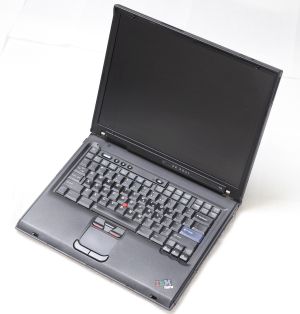 In 2009, I published a review of the ThinkPad 380ED laptop, which at that time was 12 years old. Why not continue the tradition and write about a laptop that is nearly as old as it is now? It was decided, I thought, and went to look for a suitable model.
In 2009, I published a review of the ThinkPad 380ED laptop, which at that time was 12 years old. Why not continue the tradition and write about a laptop that is nearly as old as it is now? It was decided, I thought, and went to look for a suitable model. That is, no, it was not so. I just sat on a local electronic flea market and looked at what was on sale. The criteria were simple: Thinkpad, preferably still developed by IBM, and as cheap as possible. The first got a ThinkPad T40 for 20 euros (about it like some other time). The second was the T43 - for twenty-five, in a chic configuration with an IPS screen. Buying a laptop at the price of going to a cafe is a great option for a gift for yourself on New Year's Eve.
In this post there will be a story about the purchase and development of an old laptop in the "expensive diary" format, a comparison of old ThinkPad with new ones, as well as a little sofa analytics about collecting, nostalgia and the evolution of technology.
UPD: I will share the progress in my outdated research on Telegram: https://t.me/emm386
Context
Thinkpad T43 series were announced in January 2005, and at the end of 2004 it became known about the purchase of IBM's personal systems division by Lenovo. The T43 is thus one of the latest laptops developed back at IBM. A year later, the Thinkpad T60 was released, which for a long time became a cult among fans of the brand, thanks to the “correct” nameplate, a 4: 3 aspect ratio screen and suitability for upgrade: after an easy (sarcasm!) File upgrade, you can put almost Core i7 there fifth generation. T43 does not have such a status, which has a positive effect on the cost of the original units.
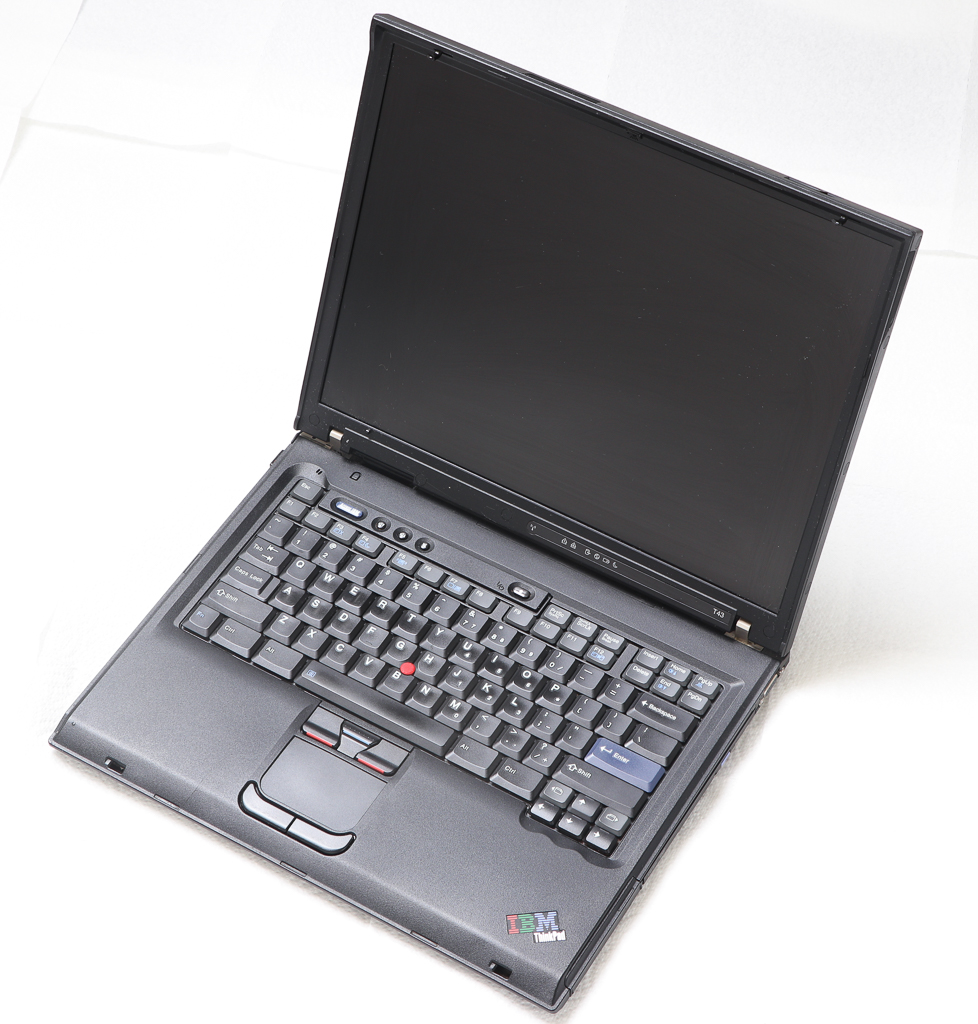
Specifications
I got a 2668-88u model with the following parameters at birth:
• A single-core 32-bit Pentium M 750 processor 1.86 GHz (the first Intel dual-core mobile processors will appear a year later)
• 512 megabytes of DDR2 RAM
• ATI Mobility Radeon X300 graphics card , 64 megabytes own memory. Performance - approximately 10% of the capabilities of video integrated into modern Intel Haswell processors
• 40 GB 5400RPM hard drive, IDE interface
• Intel 2200bg wireless module
• DVD / CD-RW drive
• Built-in modem and infrared port
• 15-inch screen, IPS, resolution 1400x1050
• 6-cell battery (3.8 hours of battery life, up to 5.7 hours with an extended 9-cell).
• PCMCIA II / III
slot • Two USB 2.0 connectors
• Weight 2.57 kg (and this is a series with “a combination of power and mobility” for frequent travelers!)
Full specifications are still available on the IBM website here . People from the future , let me know when this link dies, I’ll change it to a web archive. Drivers for older IBM and Lenovo laptops are still available here .
Cost at the time of the announcement: $ 2,349 in the United States, or slightly more than $ 3,000 modern dollars adjusted for inflation. In rubles, this is 66030 at the exchange rate of January 2005 or 172000 at the exchange rate of January 2018. For 13 years, the cost of a laptop fell 100 times.
condition
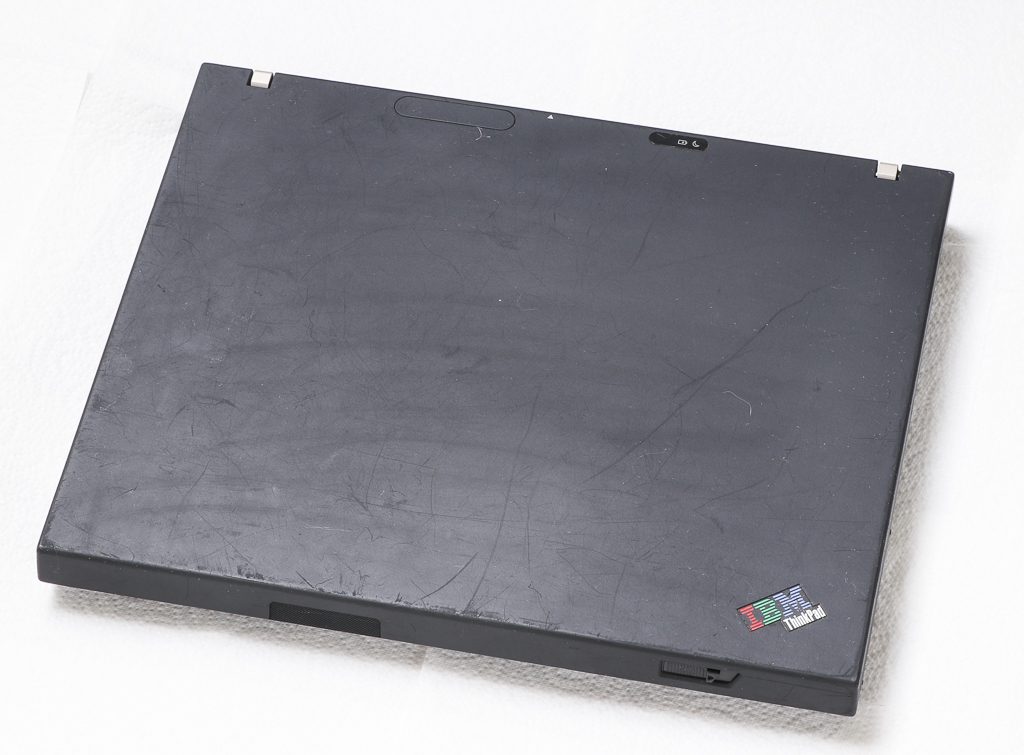
Used a laptop.
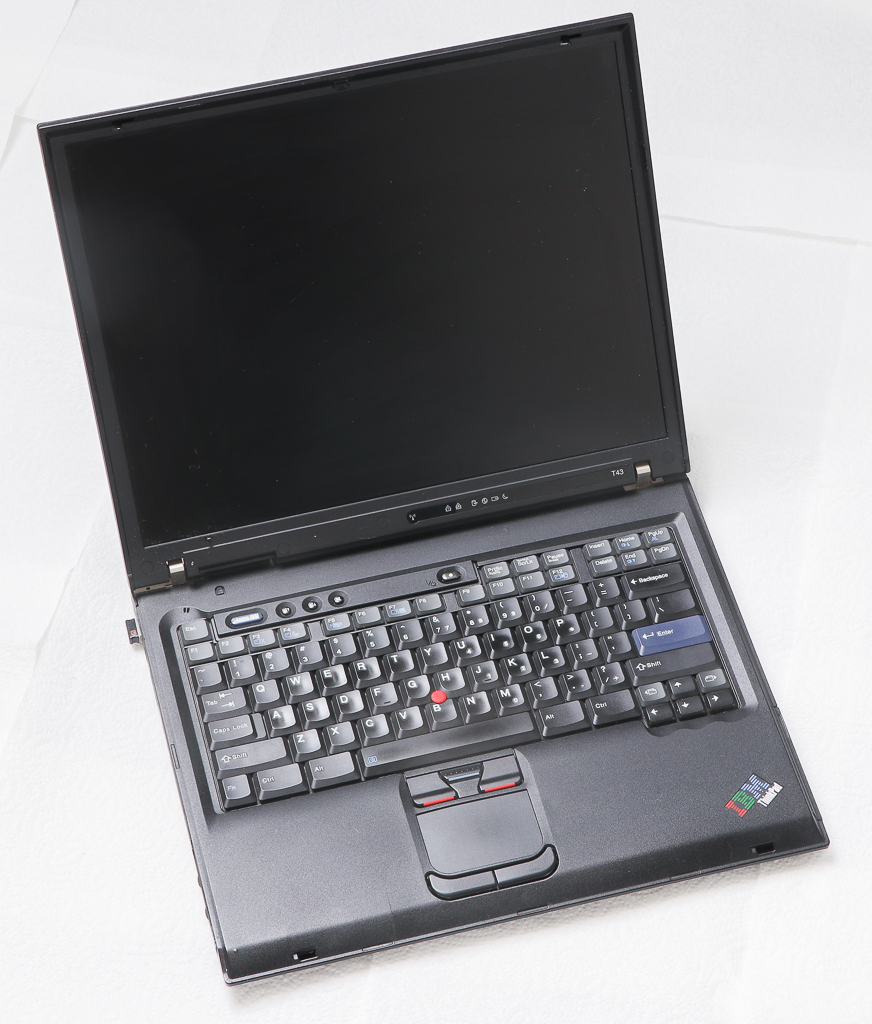
A crack on a palmrest is the only serious cosmetic flaw.

Apart from scratches on the cover: on the company rough coating they are simply inevitable.

Very thick laptop. Above is my working 12-inch Dell. Not the most honest comparison, but still.

The Thinklight, finally sawn out, seems to be in the Lenovo Thinkpad X / T * 40 series. And no webcam. Privacy!
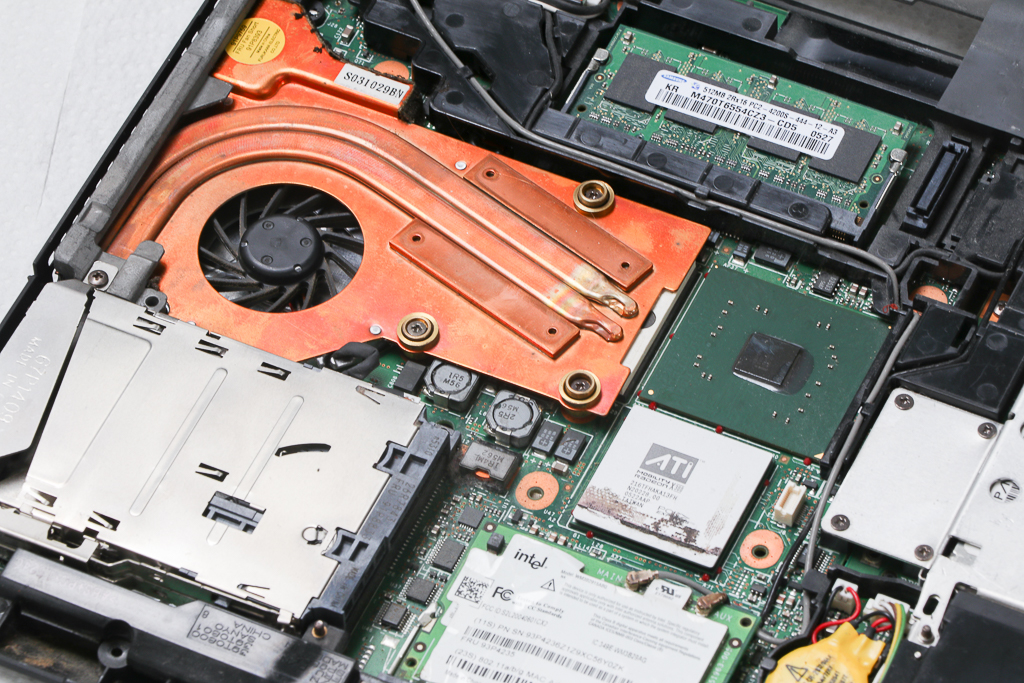
The insides. The cooler made dying sounds, so it was temporarily replaced by an analog from the T40 (until it arrives to replace a new one). The original also closes the video chip, but here it is open (does not overheat).

The battery is replaced by the previous owner to an extended non-original. Due to this, it retained 75% of the capacity, while the original from the T40 shows less than 20% (but so far it works). They could not detect a non-original battery then.

But they knew how to detect a non-original hard drive. Before me, the original 40 gigabytes were replaced with 30, and this was not an officially approved spare part. The BIOS has a separate setting for this: do not boot at all or squeak and complain. A patched BIOS found on the Internet has saved the laptop from complaints. As a result, a quieter 80GB hard drive was installed.

One RAM slot is available for custom upgrade. The second is under the keyboard, but access was not officially approved there. The maximum amount of RAM is 2 gigabytes, which is collectively tested on a very useful ThinkWiki Linux resource .
One button on the keyboard was glued with superglue, had to be rearranged from another laptop. The T40 and T43 series produced both 14-inch and 15-inch models. Keyboards are structurally identical, but the hardware is located in different ways and does not rearrange. The same is true for the mass of other small parts.
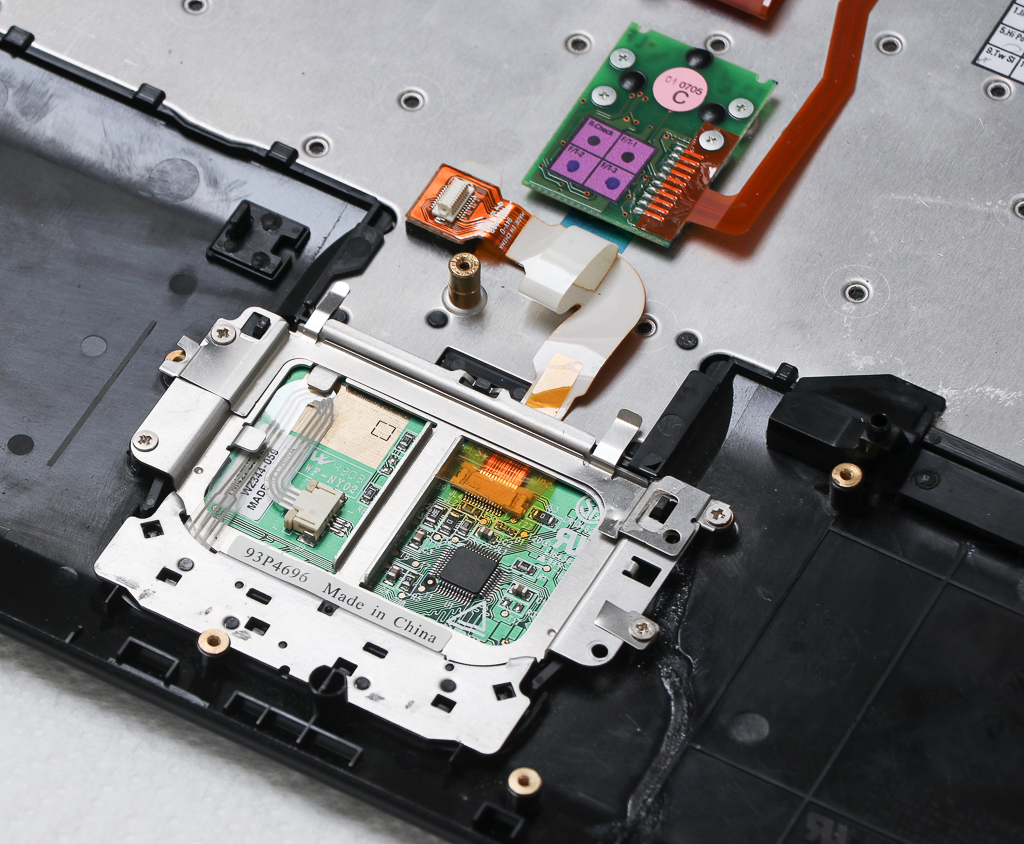
For example, for the touchpad: the devices are the same, the hardware is different. The touchpad of this laptop was flooded with something sticky, the buttons were short, and this was the main reason for the low price: “slowly or does not respond to mouse clicks”. I had to rearrange the buttons with the T40, and prykholkhoz mount. Over time, it is possible to replace the cracked palmrest with the touchpad as a whole.
The release of T43 was at the beginning of the transition from the IDE to SATA. The hard drive controller here is already SATA, but since at the time of the release of such hard drives there were few, and they were expensive, a chip was installed that converted SATA to PATA. A common modification of this laptop is to unsolder the chip and replace the connector for installing a modern SATA HDD or SSD (more info here and here) For my taste, this is already too much, it’s easier to buy a PATA-mSATA converter and install an SSD in this way. It will turn out double conversion, and there may be a loss in performance, but should anyone care about the performance in an ancient laptop?
Use cases
In 2009, I tried to put to business even the Thinkpad 380ED, which had lost all relevance: I built a slow-moving rocking torrent (albeit adequate to the then Internet channel). Since then, much has changed: there is no point in using the T43 for something really useful anymore. If you have little money, more powerful used computers and laptops are not much more expensive. If you are a homemade kulibin and saw all sorts of file balls and mail servers, there are Raspberry Pi and similar minicomputers with similar performance and much lower power consumption.
About 7 years ago, such a laptop could be recommended for simple tasks: office, internet, movies. Now, for movies, an inexpensive tablet is better. The Internet is incredibly heavy, not even in traffic, but in various autorun videos and other javascript. YouTube on T43 can only be viewed in 360p resolution, and only in single-task mode (offline video of 720p and higher is not supported at all). As for the office, it is better not to use resources such as work mail from unsupported and non-renewable Windows XP. Unsafe Windows 7 (and 10) will also work on T43, but they will already slow down. As a result, something is missing all the time: either cores, or memory, or hard drive speed. Unless the screen in this model is very good, and second only to 4K displays.

Comparison with the modern 12-inch IPS FullHD display. The screen of the new laptop clearly wins in brightness. Perhaps the reason for this is the sunken T43 fluorescent backlight. The color rendition of the old laptop is really warm-lamp, it also warms up when turned on, changing the colors. The advantages of a 4: 3 screen when viewing photos here are pretty obvious.
Okay, you can say that the farther, the more problems with the launch of the old software and operating systems. At the end of last year, for example, Intel decidedabandon the BIOS in favor of pure UEFI, which will finally close the topic with the launch of Windows XP natively. I do not think that this is an argument for buying old iron in order to run old programs. Yes, there may be problems on new systems, but this does not mean that they are not on old ones. Emulation is much more convenient and practical, at least for DOS, at least for Windows 98, at least for XP. Why then do we need old computers? Yes, just like that, because I want to.

Therefore, I will use the T43 as a working museum exhibit. I installed software adequate to the year of release on it, uploaded old games, rewrote music from CDs, which I recorded in the early 2000s for my MP3 / CD player. I will sometimes turn it on and recall youth, in such a geeky context. Unlike the modern environment, in which almost all the data is in the cloud, everything will be available here at any time offline, as befits the era of the beginning of the two thousandth, the era of "before facebook". The main thing is not to forget to periodically backup the hard drive to some more reliable media.

The ThinkPad T43 supports the Dock II docking station, which is equipped not only with a full set of ports, from serial to DVI, but also with a slot for a PCI card. An interesting way to experiment with, say, old sound cards.
Old ThinkPad and new, or talk about cakes
Lenovo continues the tradition of IBM and announces new ThinkPad models in January. This year, this is the new ultraportable ThinkPad X280 (alas, without a removable battery and a limited number of ports) and T480 and T580 laptops, direct descendants of the Thinkpad T43.
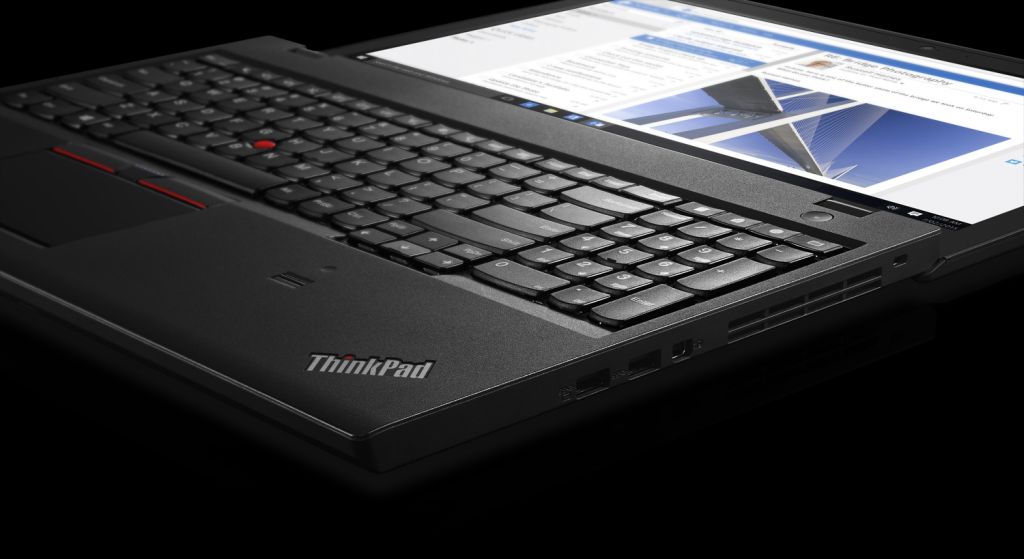
There was no photo of the Thinkpad T580, so here is a picture from the ThinkPad T570.
Times have changed: if the 2005 announcement contained a huge sheet of technical specifications, now only beautiful words remain - about mobility, speed, lightness and productivity. Words for 13 years have not changed at all, and the characteristics at the time of preparation of the material were generally not in the public domain. Last year's Thinkpad T570, a direct analog of the T43, weighs 2 kilos, is equipped with a dual-core processor (the T480 should have four cores), costs $ 1,000, comes with a FullHD screen, which is slightly better than the T43, or 4K display.
It is clear that productivity has grown by an order of magnitude, but what about ergonomics and convenience? The T43 also has the right seven-row keyboard, thick plastic, and a small but comfortable touchpad. Among fans of the series, it is widely believed that laptops are now not the same. In a sense, this is indeed so, now and then laptops are very different devices in terms of consumer qualities. But after a week of acquaintance with a 13-year-old laptop, I can’t say that it is much more convenient. It is heavy, it has sores fixed later (a crack on the palmrest - it is not from inaccurate use, but from a lack of design), and even the keyboard (you will forgive me) is too noisy for my taste, although it is a pleasant touch.
ThinkPad T43 belongs to the era when the laptop was something special, such a triumph of technology. Now it is business as usual, an industry with a small margin, where the flight of an engineer’s imagination can easily nullify annual profits. This business cynicism actually helps: modern laptops are more convenient, practical and more functional if you need to work and not indulge in memories.
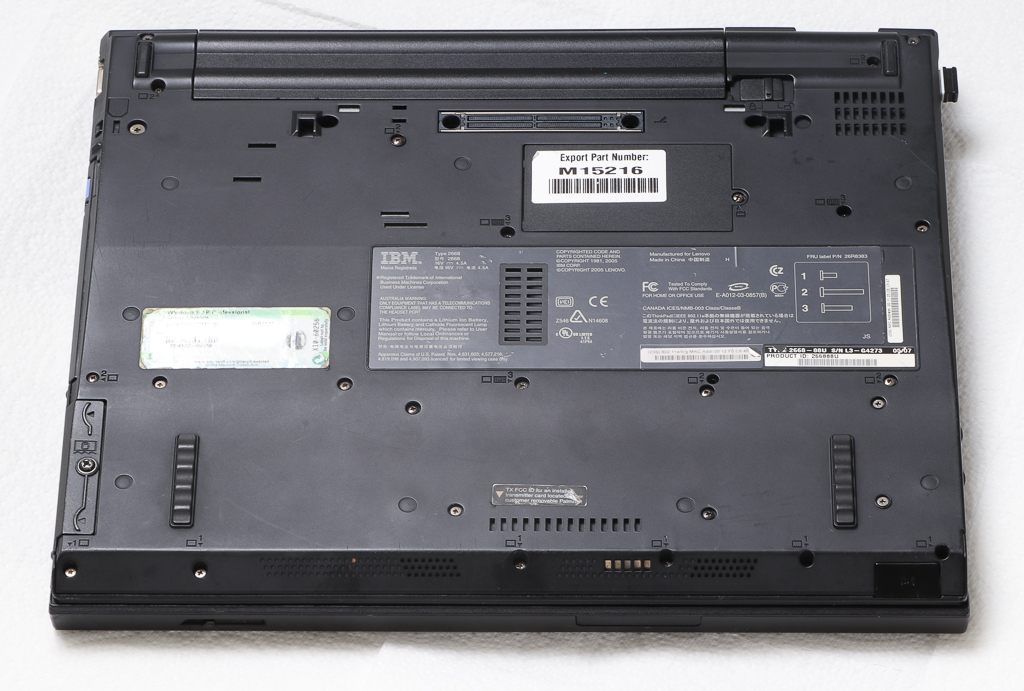
But still, the T43 caused me as many positive emotions as any new laptop is no longer able to cause. Apparently, this is a sign of impending old age. I appreciated the convenience of the screen with classic proportions, versatility, incredible maintainability and a lot of little things that increase reliability.
It seems to me that in 5-10 years, laptops will finally become niche devices for professionals. They will again be expensive, as they will be sold in thousands, not millions. This means that there will be more opportunities to produce models at the request of those who are willing to pay. Then I can buy a new laptop with modern hardware, but a classic keyboard and a 4: 3 screen, with a set of ports and batteries for my exacting taste.
But just want it?
